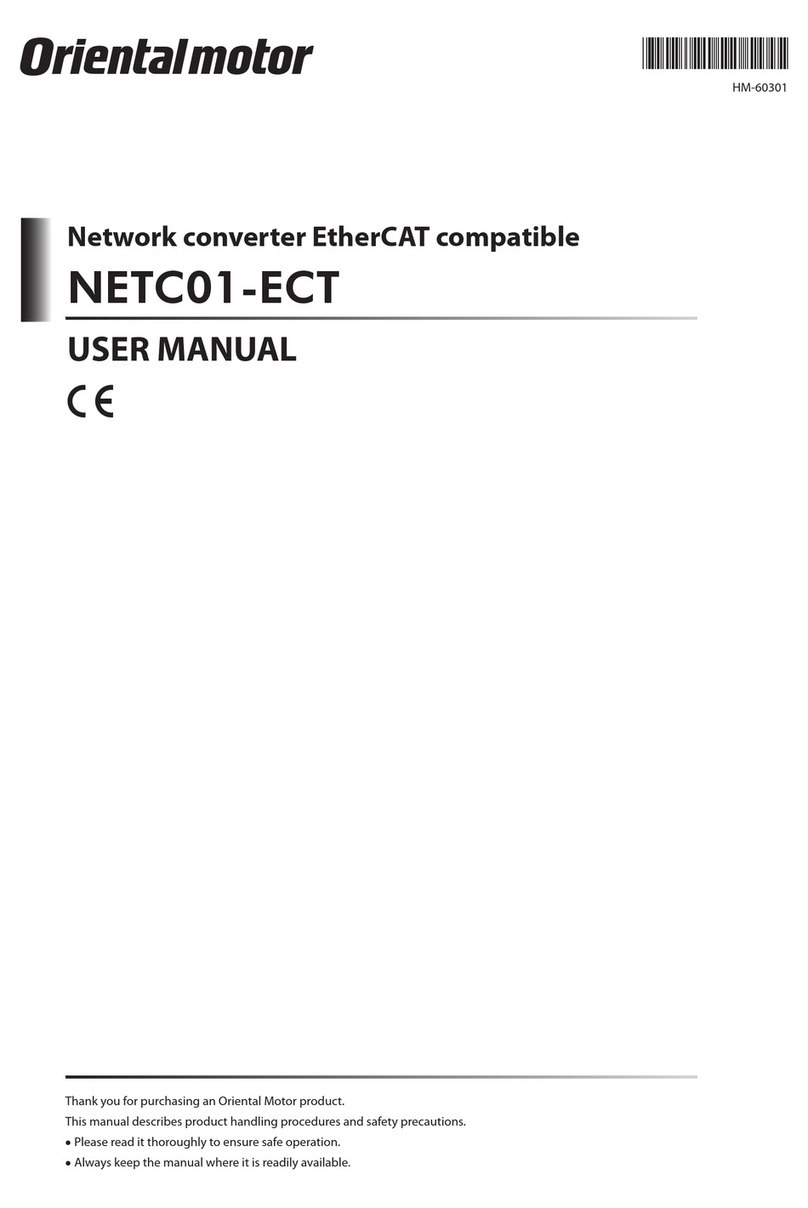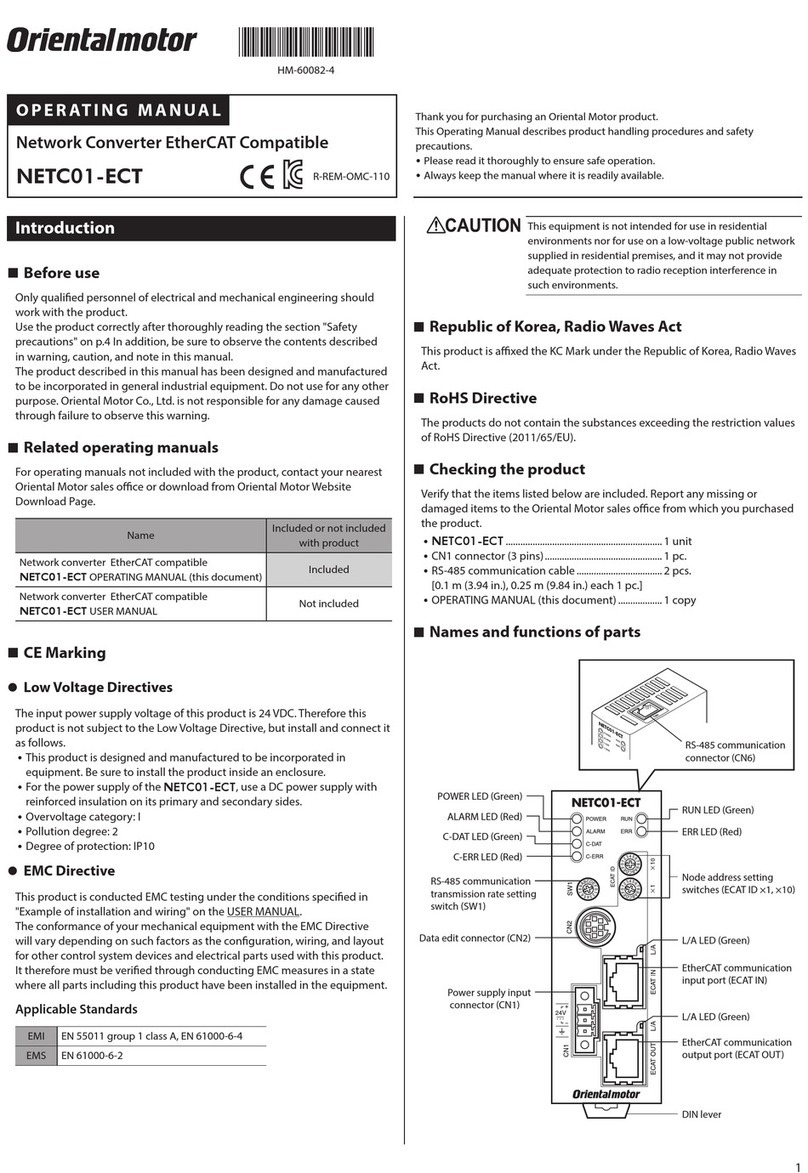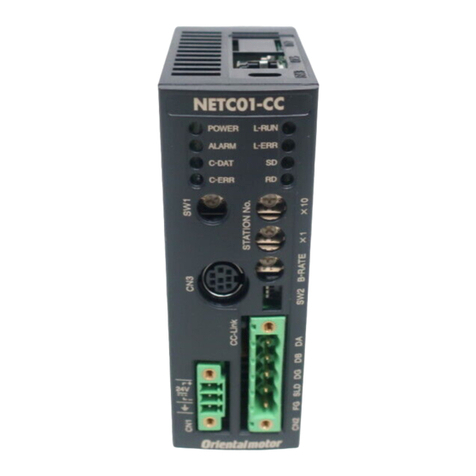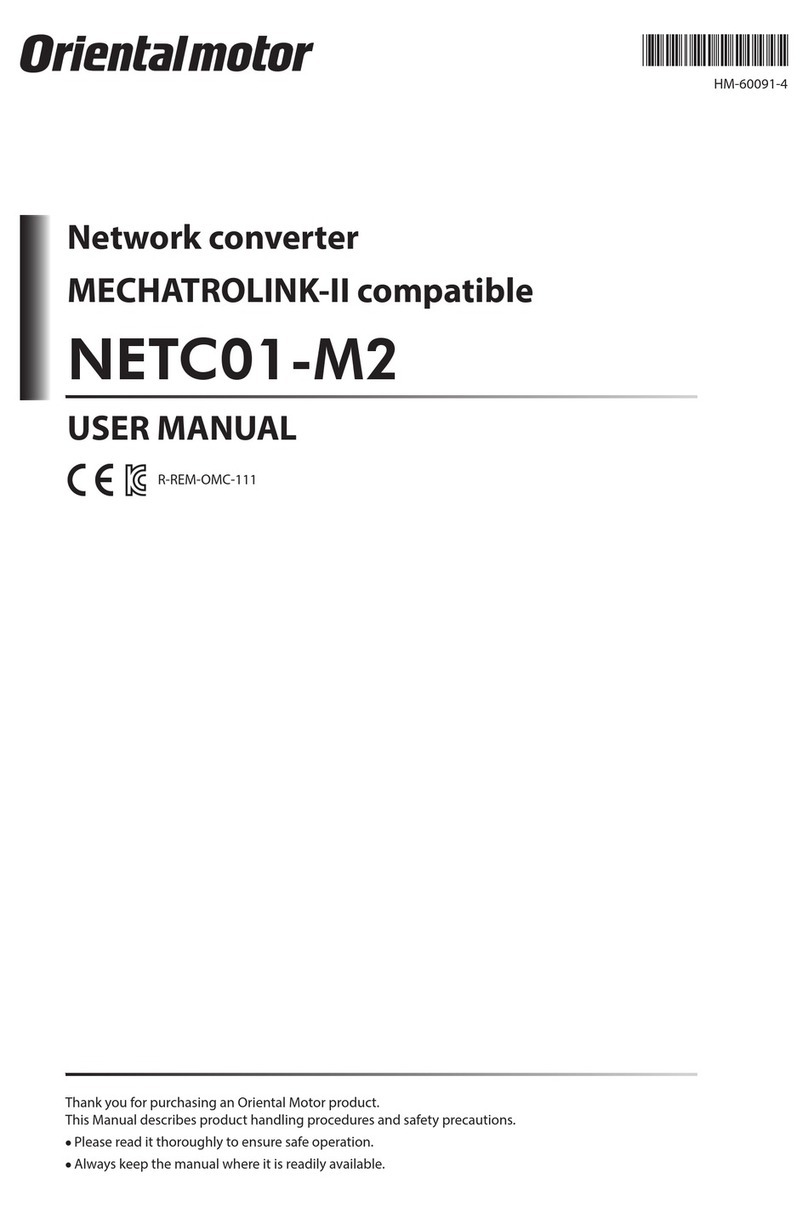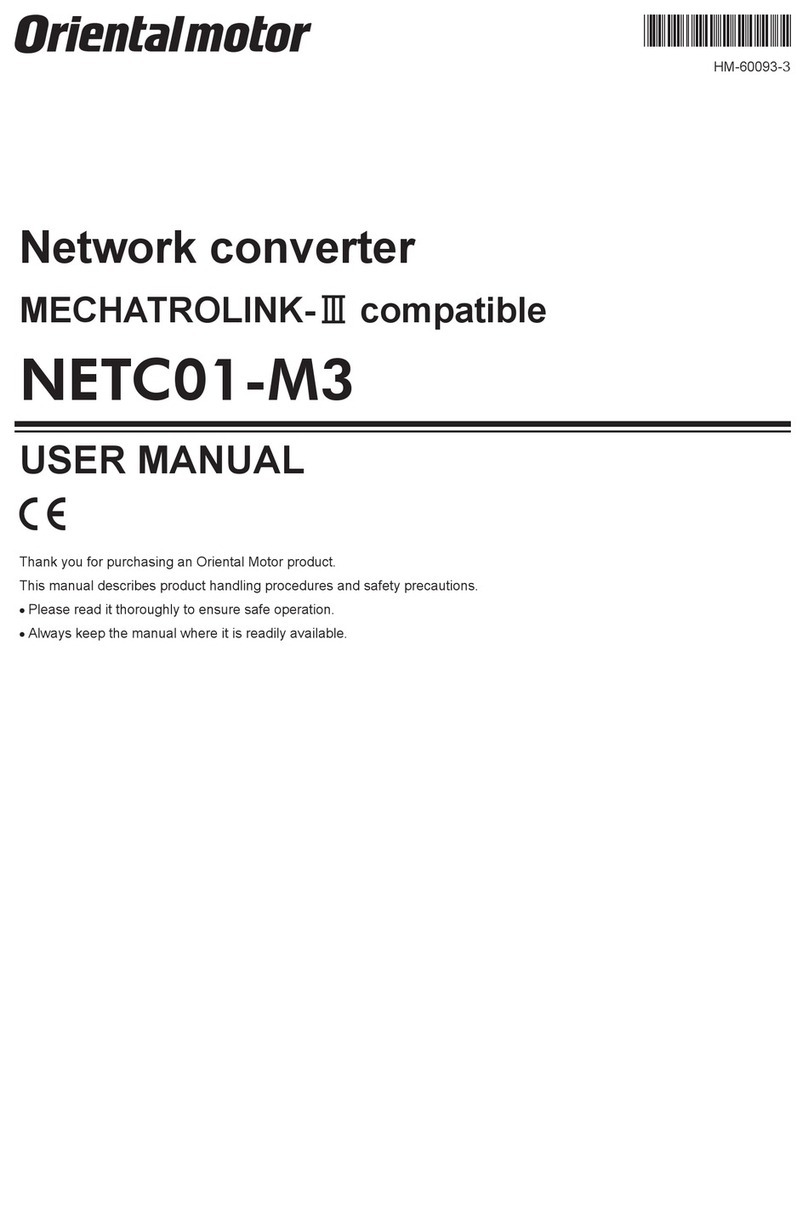
−2−
Table of contents
1 Safety precautions .................................... 3
2 Introduction ............................................... 5
3 Preparation................................................. 7
3.1 Checking the product.........................................7
3.2 Names and functions of parts..........................8
4 Installation................................................ 10
4.1 Location for installation .................................. 10
4.2 Installation method .......................................... 10
4.3 Installing and wiring in compliance with
EMC Directive ..................................................... 11
5 Connection ............................................... 13
5.1 Connection example........................................ 13
5.2 Connecting the power supply and
grounding the NETC01-CC ....................... 13
5.3 Connecting the RS-485 communication
cable ...................................................................... 14
5.4 Connecting the CC-Link
communication ................................................. 15
5.5 Connecting the data setter............................ 15
6 Guidance ................................................... 16
7 Setting ....................................................... 19
7.1 Transmission rate of RS-485
communication ................................................. 19
7.2 Operation mode ................................................ 19
7.3 CC-Link station number.................................. 20
7.4 CC-Link baud rate.............................................. 20
7.5 Termination resistor.......................................... 20
8 Basic function........................................... 21
8.1 Remote I/O list.................................................... 21
8.2 Remote register list........................................... 22
8.3 Assignment of remote I/O.............................. 22
8.4 Details of remote I/O........................................ 23
8.5 Monitor ................................................................. 25
8.6 Command execution........................................ 26
8.7 Communication error code ...........................28
8.8 Read, write, save of parameters ................... 29
9 RS-485 communication specication.. 30
9.1 Operation mode ................................................ 30
9.2 RS-485 communication conguration....... 30
9.3 RS-485 communication and scan time...... 31
9.4 RS-485 communication status...................... 32
10 Troubleshooting and remedial
actions ....................................................... 33
10.1 Alarms.................................................................... 33
10.2 CC-Link communication error....................... 35
10.3 Warning................................................................. 36
10.4 When connecting with the RS-485
communication compatible product......... 36
11 Inspection ................................................. 37
12 General specications ............................ 38
13 Operation using the OPX-2A ............... 39
13.1 Overview of the OPX-2A............................... 39
13.2 Names and functions of parts....................... 40
13.3 Notation................................................................ 40
13.4 How to read the display.................................. 40
13.5 OPX-2A error display...................................... 41
13.6 Screen transitions.............................................. 42
13.7 Monitor mode..................................................... 44
13.8 Parameter mode ................................................ 45
13.9 Copy mode .......................................................... 45
14 Command code list .................................47
14.1 Application parameter .................................... 47
14.2 System parameter ............................................. 47
14.3 Maintenance command.................................. 48
14.4 Monitor command............................................ 48
15 Accessories (sold separately) ................ 49
